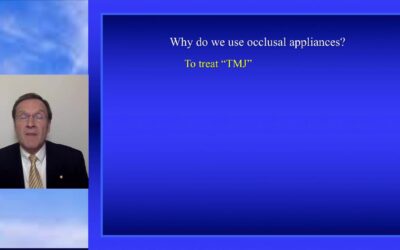Duration: 39 minutes, 11 seconds
Author: Dr. Francesco Mintrone
Full Mouth Rehabilitation Part 1 of 2: A Systematic Approach
Full mouth rehabilitation is a comprehensive dental treatment that aims to restore both the aesthetic and functional aspects of a patient’s smile. This lecture focuses on the systematic approach to full mouth rehabilitation and how it can significantly improve a patient’s self-esteem and overall quality of life.
The Aesthetic Analysis
The first step in full mouth rehabilitation is to conduct a thorough aesthetic analysis. This analysis helps the dentist understand what is missing in the patient’s smile and what needs to be done to achieve the desired outcome. It involves evaluating various factors such as tooth color, shape, size, and alignment.
The Facial Analysis
One crucial component of the aesthetic analysis is the facial analysis. This analysis considers factors such as the occlusal plan, horizontal reference line, and facial proportions. It helps the dentist determine the optimal position of the teeth and the necessary changes to achieve facial harmony and balance.
Occlusal Plan
The occlusal plan refers to the alignment of the upper and lower teeth when the jaws are closed. It plays a vital role in the overall functionality of the bite as well as the aesthetic appearance of the smile. The dentist carefully evaluates the occlusal plan to identify any discrepancies or irregularities that need to be corrected during the full mouth rehabilitation process.
Horizontal Reference Line
The horizontal reference line is another critical consideration in the facial analysis. It helps determine the ideal position of the upper teeth in relation to the lower lip, chin, and other facial features. By adjusting the horizontal reference line, the dentist can create a beautiful and harmonious smile that complements the patient’s unique facial structure.
Facial Proportions
Facial proportions play an essential role in the overall aesthetic appeal of a smile. The dentist carefully examines the patient’s facial features, such as the width of the mouth, the height of the lips, and the symmetry of the face. By addressing any facial disproportions, the dentist can create a more balanced and visually pleasing smile.
Horizontal and Vertical Disharmony
Horizontal and vertical disharmony are significant considerations in full mouth rehabilitation. Horizontal disharmony refers to the misalignment of the teeth in the horizontal plane, while vertical disharmony involves discrepancies in tooth length and occlusal plane. Both types of disharmony can affect the overall functionality and aesthetic appeal of the smile.
The dentist evaluates these disharmonies and develops a treatment plan to correct them. This may involve orthodontic treatment, dental crowns, veneers, dental implants, or a combination of these procedures. By addressing the horizontal and vertical disharmony, the dentist can create a functional bite and a beautiful smile.
Improving Self-Esteem and Quality of Life
The ultimate goal of full mouth rehabilitation is to improve the patient’s self-esteem and play a significant role in their life. A smile is an essential aspect of a person’s identity and confidence. When a person is unhappy with their smile, it can impact their self-esteem and overall quality of life.
By addressing the aesthetic and functional concerns through full mouth rehabilitation, dentists can transform their patients’ smiles and restore their self-confidence. Patients who undergo full mouth rehabilitation often report improvements in their social interactions, professional success, and overall happiness.
Conclusion
In conclusion, full mouth rehabilitation is a systematic approach to restoring both the aesthetic and functional aspects of a patient’s smile. Through a comprehensive aesthetic and facial analysis, dentists can determine the necessary changes to achieve facial harmony and balance. By addressing horizontal and vertical disharmony, dentists can create a functional bite and a beautiful smile. Ultimately, full mouth rehabilitation can significantly improve a patient’s self-esteem and overall quality of life.
Frequently Asked Questions
1. How long does full mouth rehabilitation take?
The duration of full mouth rehabilitation varies depending on the specific needs of the patient. It can range from several weeks to several months, depending on the complexity of the case.
2. Do I need to replace all of my teeth for full mouth rehabilitation?
Not necessarily. Full mouth rehabilitation aims to restore the entire mouth, but it doesn’t always involve replacing all of the teeth. The treatment plan is tailored to the individual patient’s needs and may include a combination of procedures such as dental crowns, veneers, implants, or orthodontics.
3. Is full mouth rehabilitation painful?
The level of discomfort during full mouth rehabilitation depends on the specific procedures performed. Most modern dental techniques are minimally invasive and involve minimal discomfort. Your dentist will ensure your comfort throughout the treatment process.
4. How long do the results of full mouth rehabilitation last?
The results of full mouth rehabilitation can last for many years with proper oral hygiene and regular dental check-ups. However, it’s essential to maintain good oral health practices to prolong the longevity of the restorations.
5. Can full mouth rehabilitation improve my bite?
Yes, full mouth rehabilitation can improve your bite by addressing any horizontal or vertical disharmony. Dentists carefully analyze your bite and develop a treatment plan to correct any bite-related issues, resulting in a more functional and comfortable bite.





Add comment